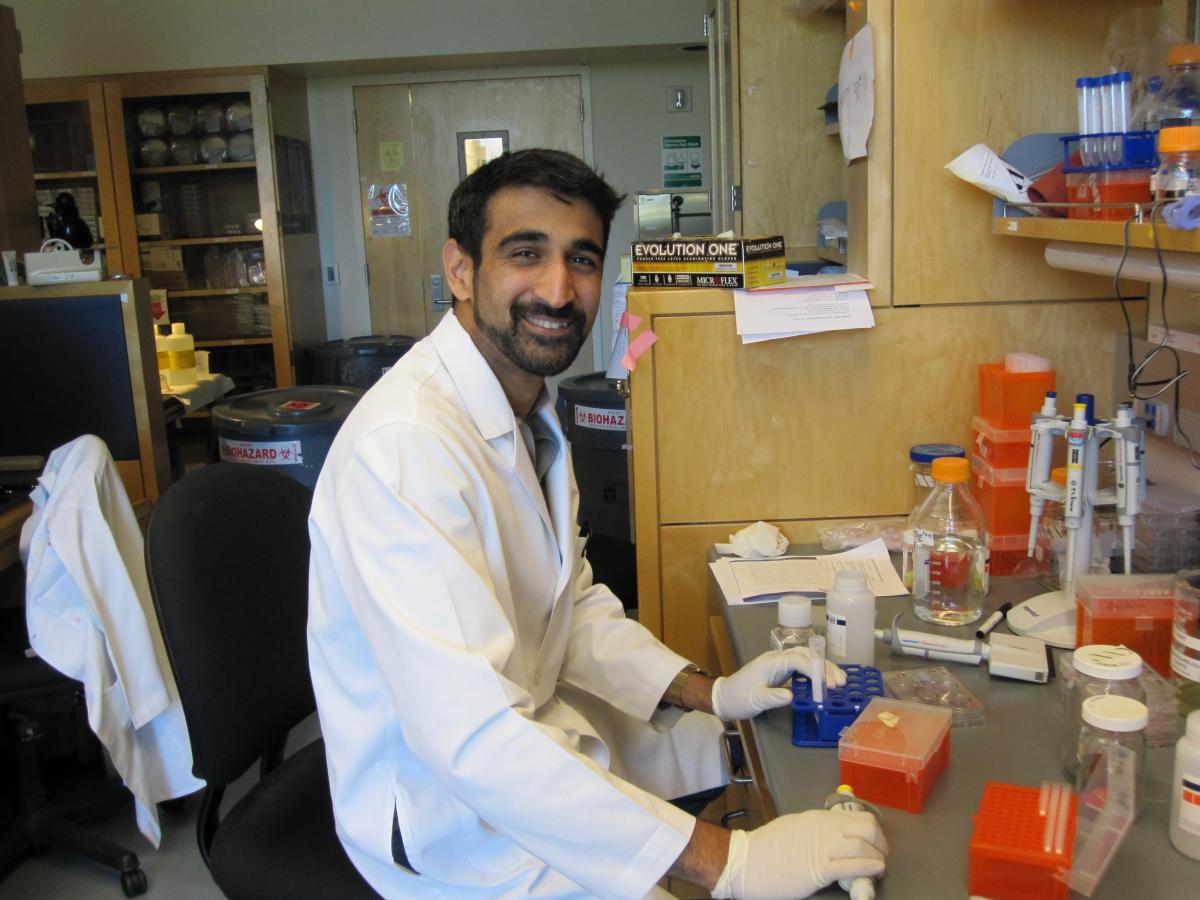Assistant Professor of Pediatrics at UCSF Dr. Amit Sabnis treats pediatric hematology and oncology patients. “The highs are much higher than the lows,” he said. His training in pediatric oncology has taught him how to help patients and their families find hope, make plans for the future and live the best life they can. “Many times that involves a period of hard treatment and then a cure,” he said.
Thanks to support from the Damon Runyon-Sohn Pediatric Cancer Fellowship, Amit is not only caring for his patients in the clinic but also developing better treatments for them in the lab. He is researching metastatic rhabdomyosarcoma (RMS), a rare muscle cancer that affects children. Treatment for advanced RMS has not advanced in decades.
The decision to become a scientist came early for Amit. While he was in elementary school, his cousin was diagnosed with retinoblastoma, a cancer of the eye. Fortunately, his cousin’s treatment was successful, but the experience taught young Amit the devastating potential of disease. He attended Stanford University where he worked in the lab of Greg Barsh, MD, PhD, studying coat pigmentation in mice. Through this experience, Amit learned that basic scientific research can uncover significant insights into human development and disease, further convincing him that research could be a rewarding career. But it was his time-intensive extracurricular work with Stanford’s theater department that sparked another discovery--he really liked talking to people and working collaboratively beyond the lab environment. This realization led Amit to explore ways he could combine his love of science with helping people directly. He decided to pursue his MD degree at the University of California San Francisco (UCSF). “If medicine and science hadn’t worked out,” he said, “I probably would be a lighting designer for an avant-garde theater.”
Amit credits the Damon Runyon-Sohn Award with allowing him critical dedicated time in the lab. Without the support, he said he would need to spend most of his time seeing patients in the clinic with little time available to focus on research. The prestige of the award and being part of the esteemed Damon Runyon scientific community has also helped raise his profile among cancer researchers, leading to important collaboration opportunities. Recently he and his colleagues demonstrated that cancer cells co-opt a cellular “chaperone” protein to promote their growth. By blocking that pathway, they could kill cells derived from patients with RMS.
The findings offer a potential new therapeutic pathway to fighting RMS, which is generally treatable in younger patients but can be fatal if diagnosed in older children after the disease has metastasized. In the current stage of his research, Amit and his colleagues are analyzing patients’ RMS tumor samples placed directly into immune-compromised mice, a critical step forward from using cells in a petri dish, which will enable them to see how the drug affects sarcoma cells in an environment that more closely mirrors patients. They are partnering with a pharmaceutical company to develop an effective targeted protein inhibitor.
Currently RMS pediatric patients who have been successfully treated often have long-term repercussions from chemotherapy—including loss of fertility, kidney and heart problems. Amit’s research has the potential to lead to new therapies for RMS that could specifically target the cancer cells with fewer harmful side effects. “The hope and the dream are to cure more patients and cure them at a lower cost to their long-term health,” he said.








